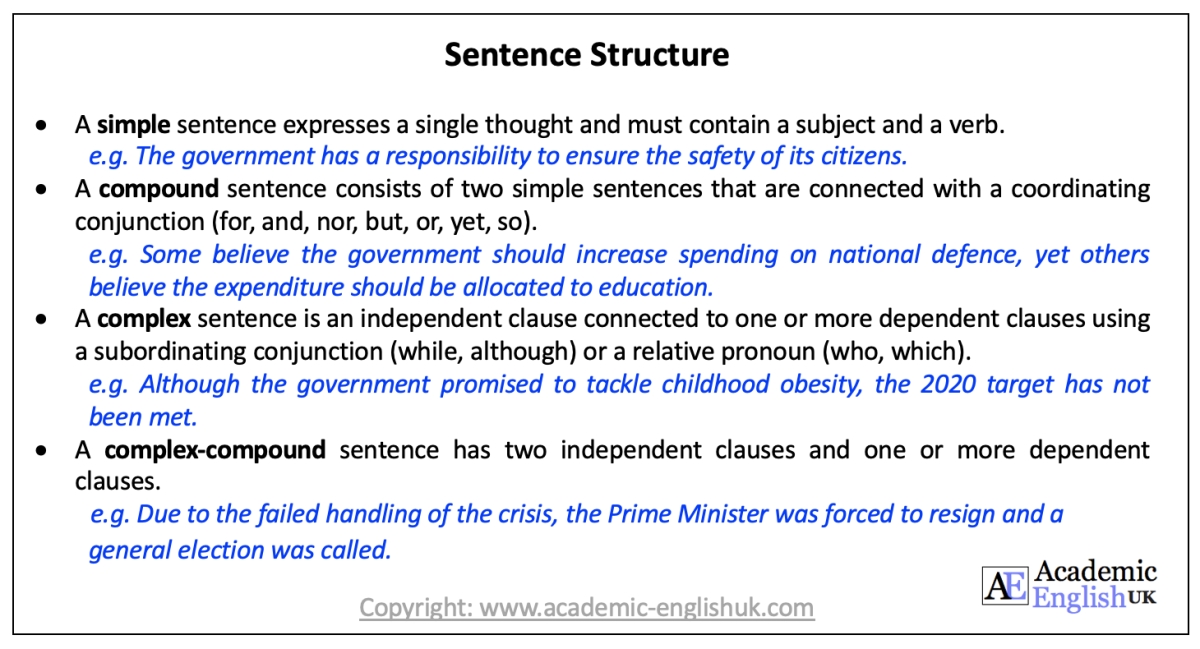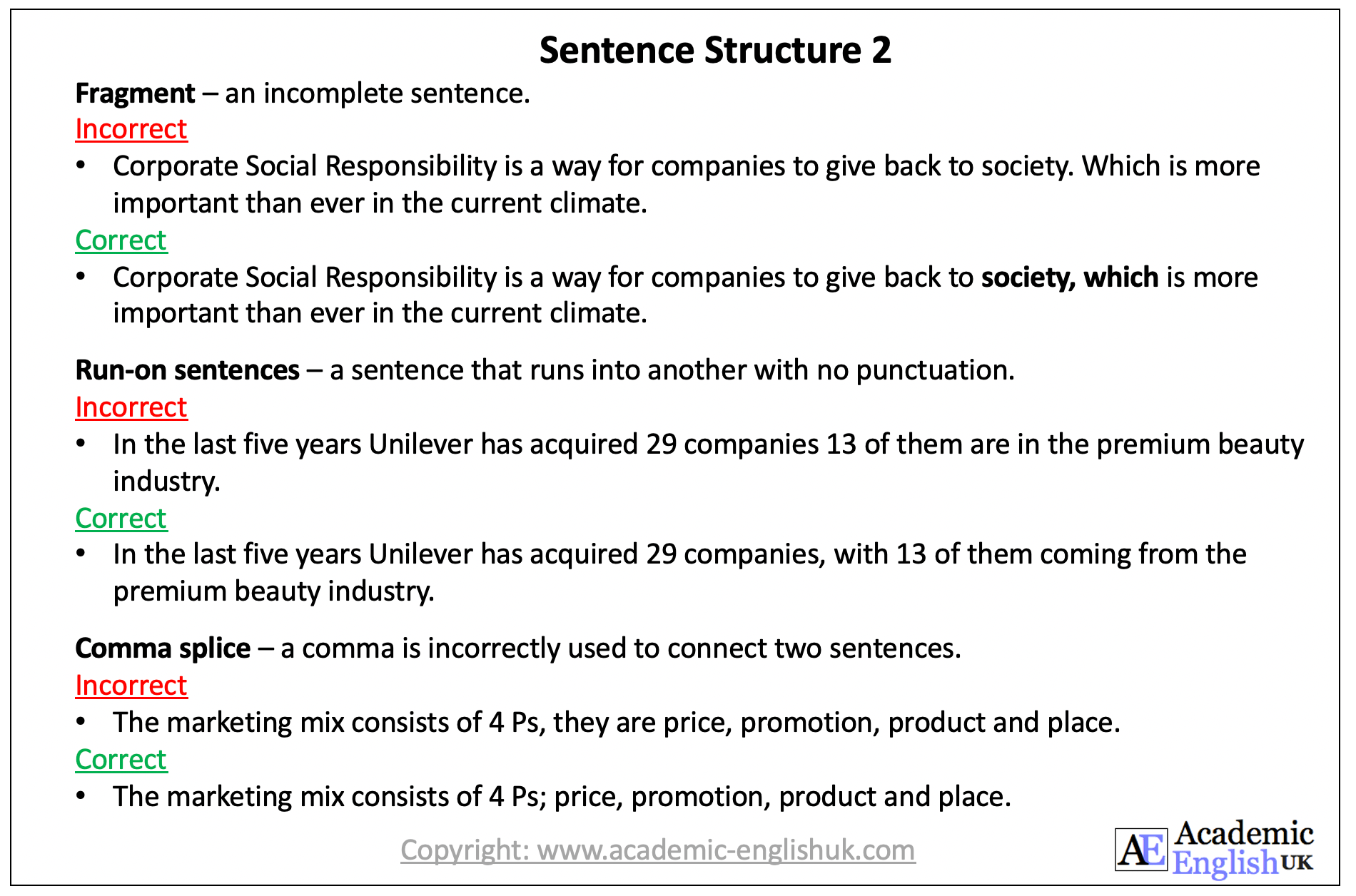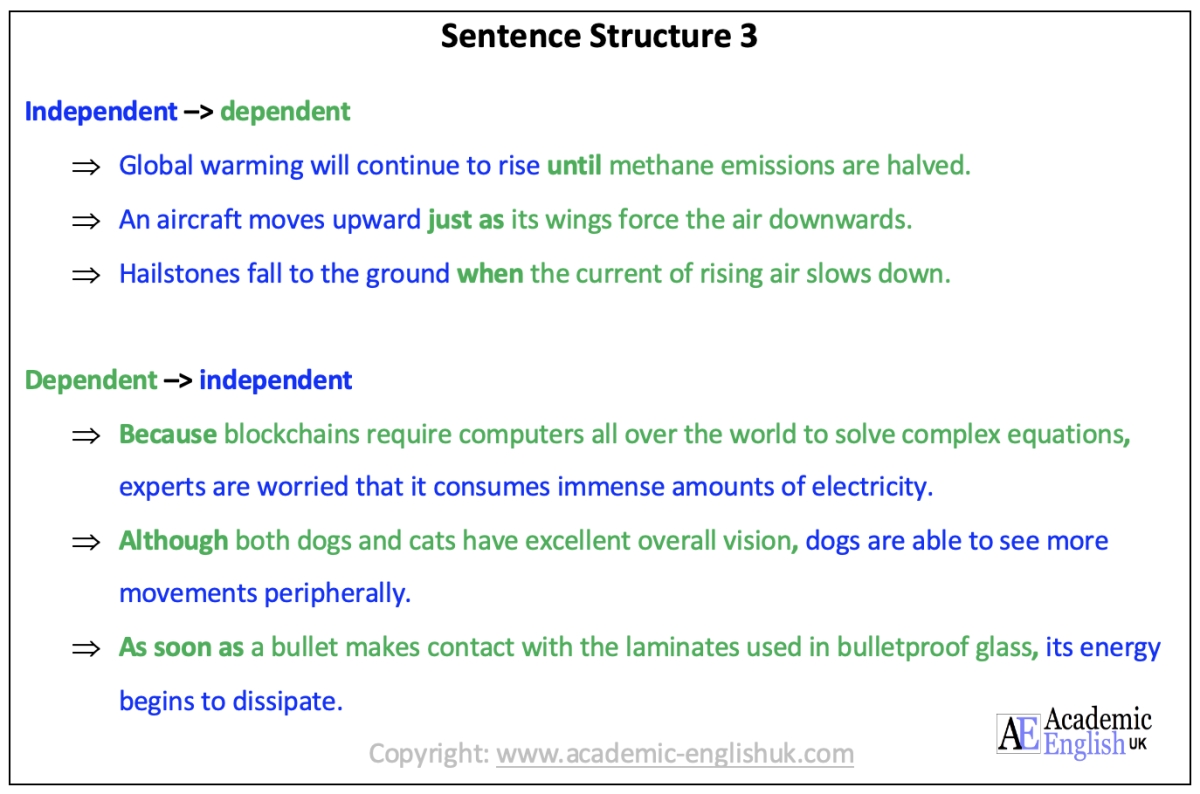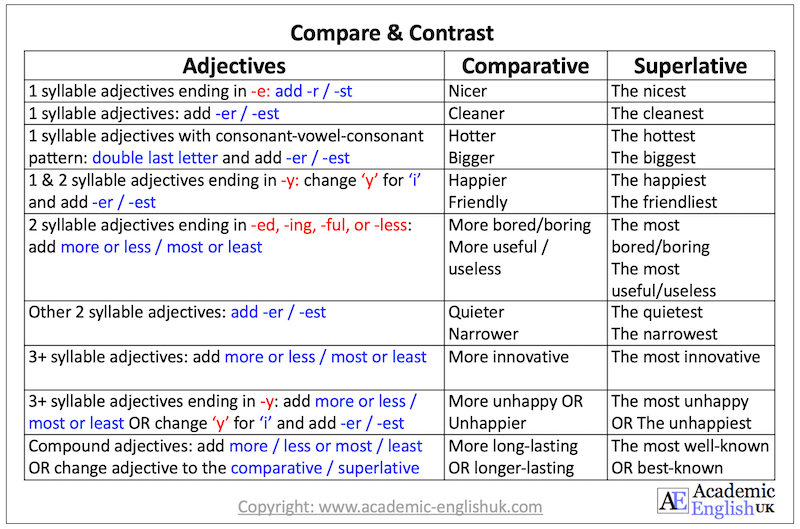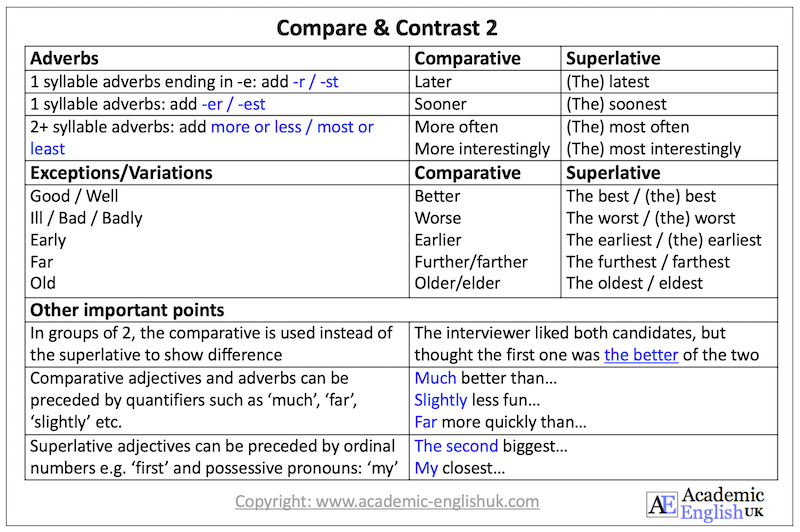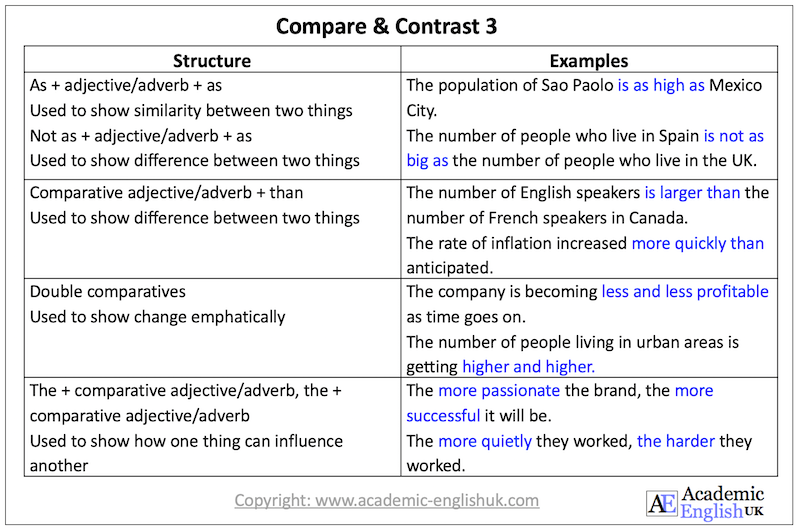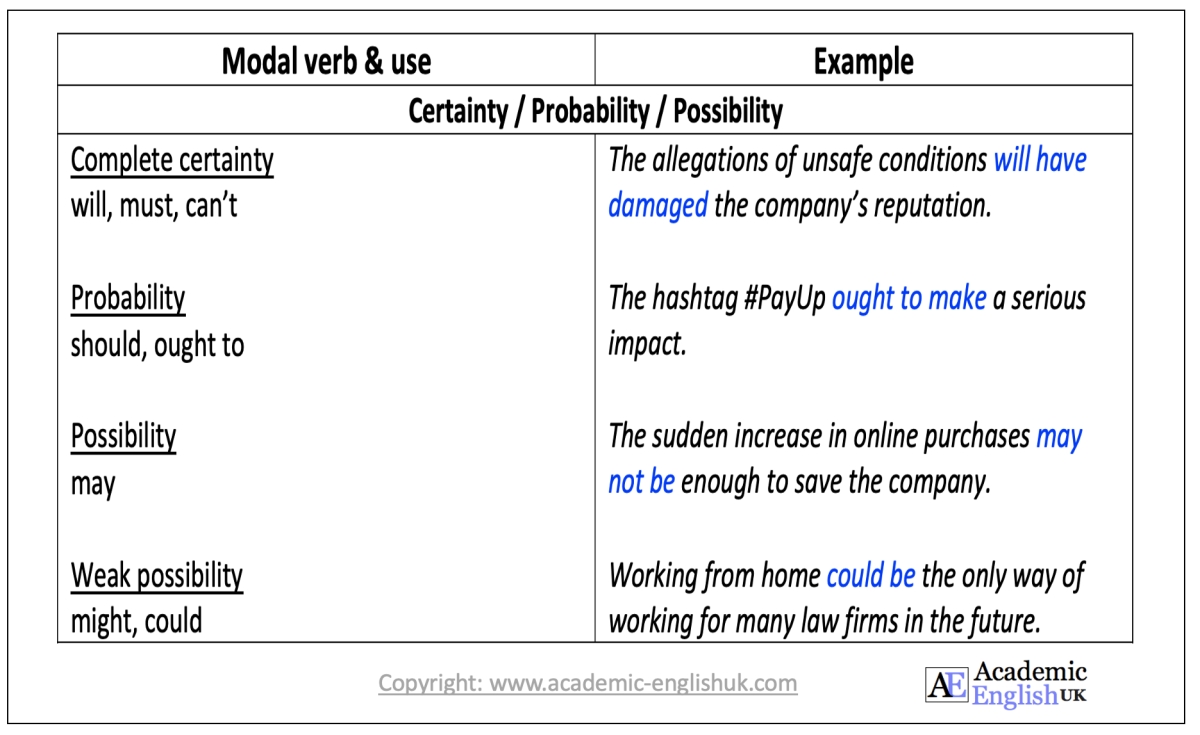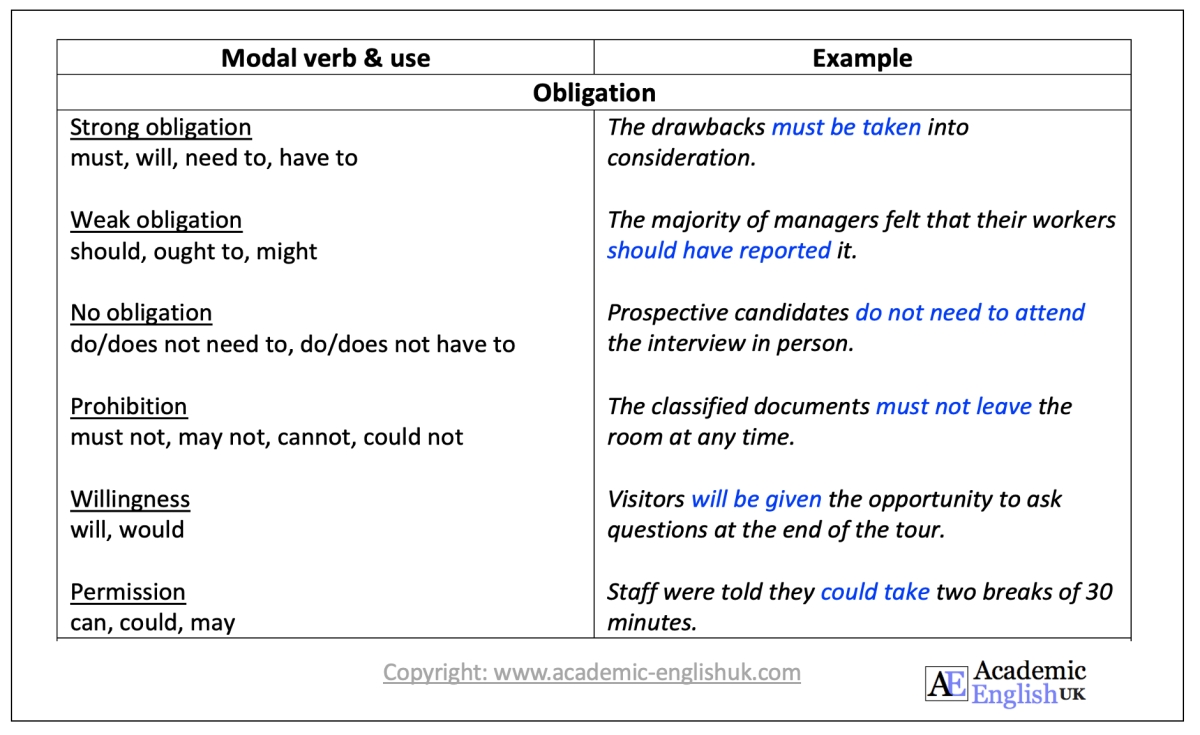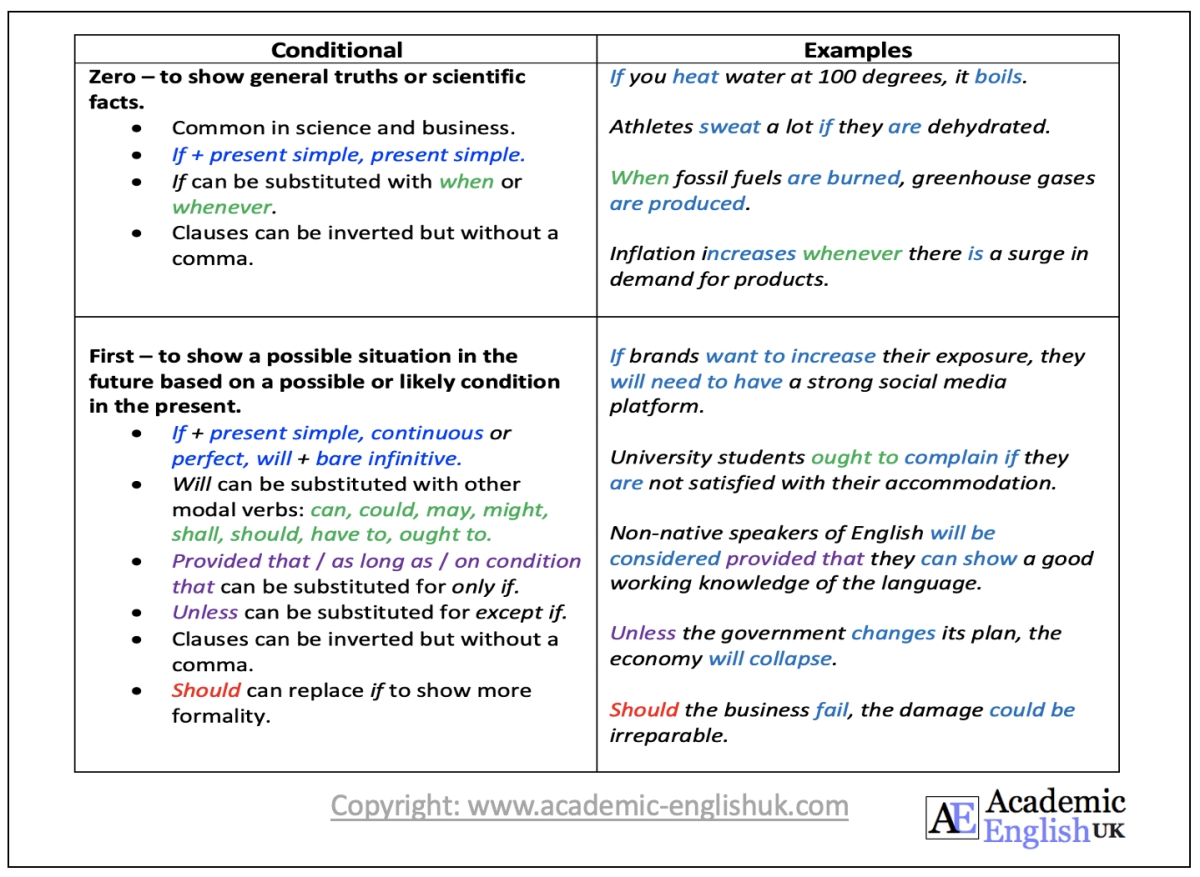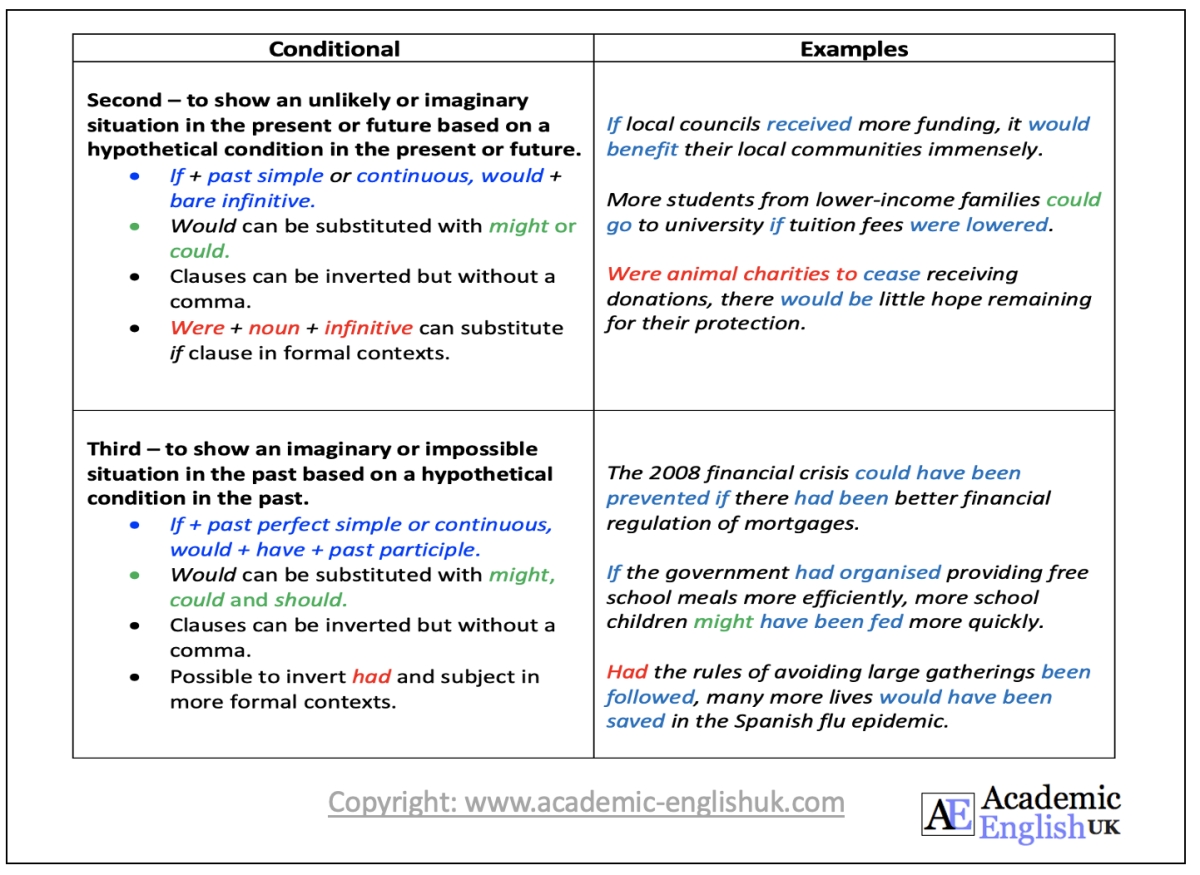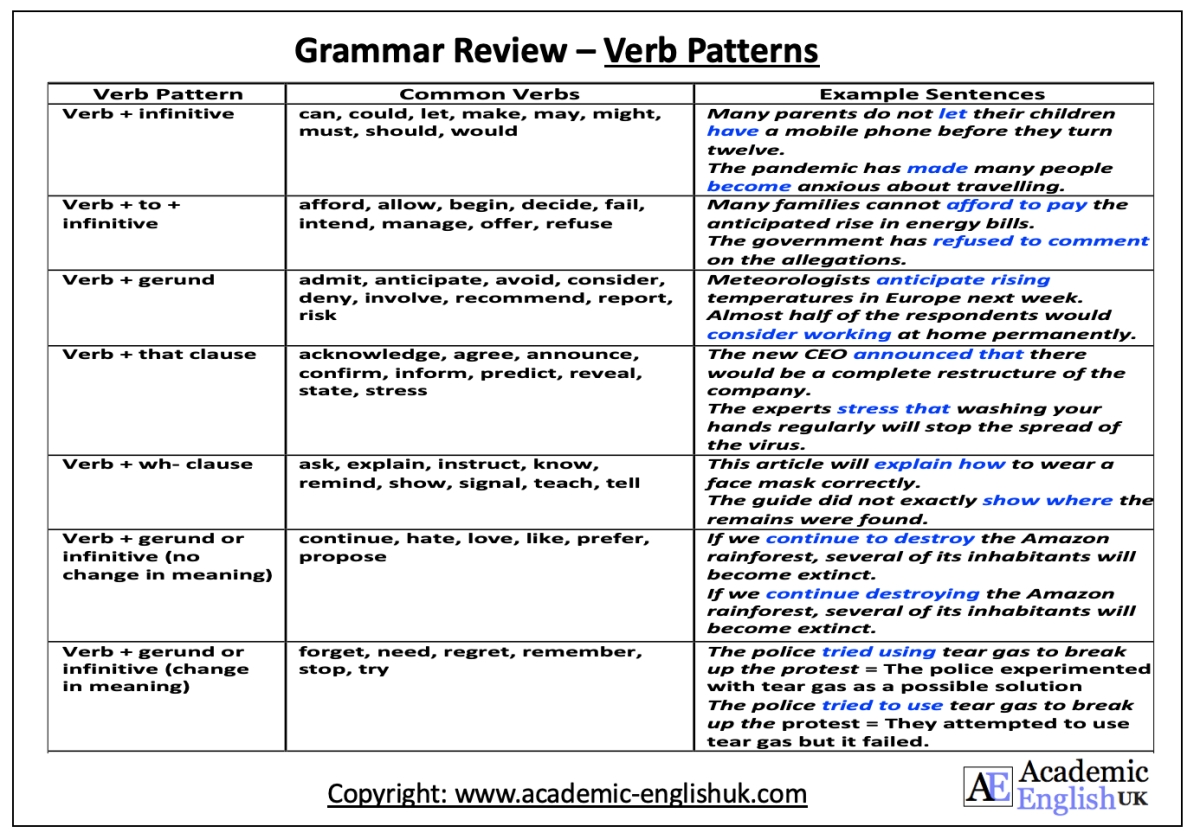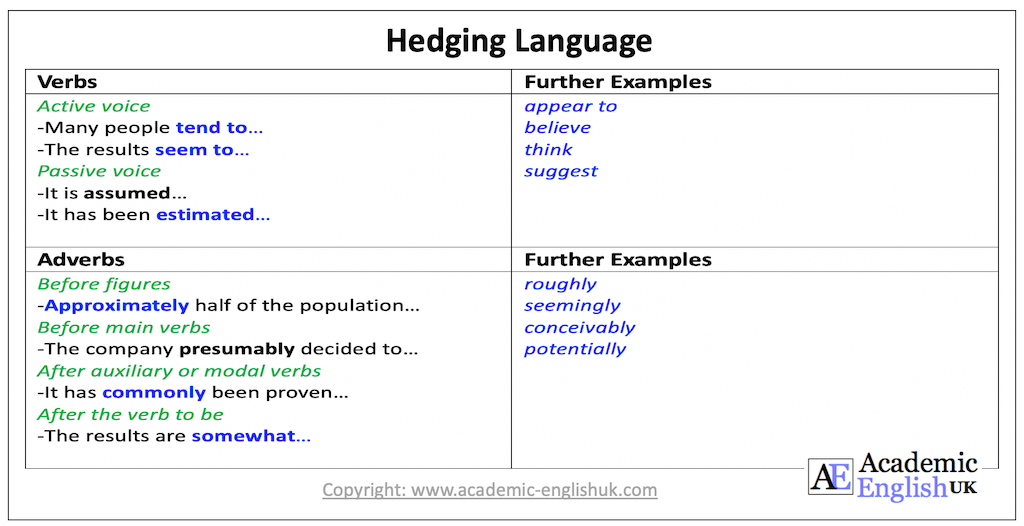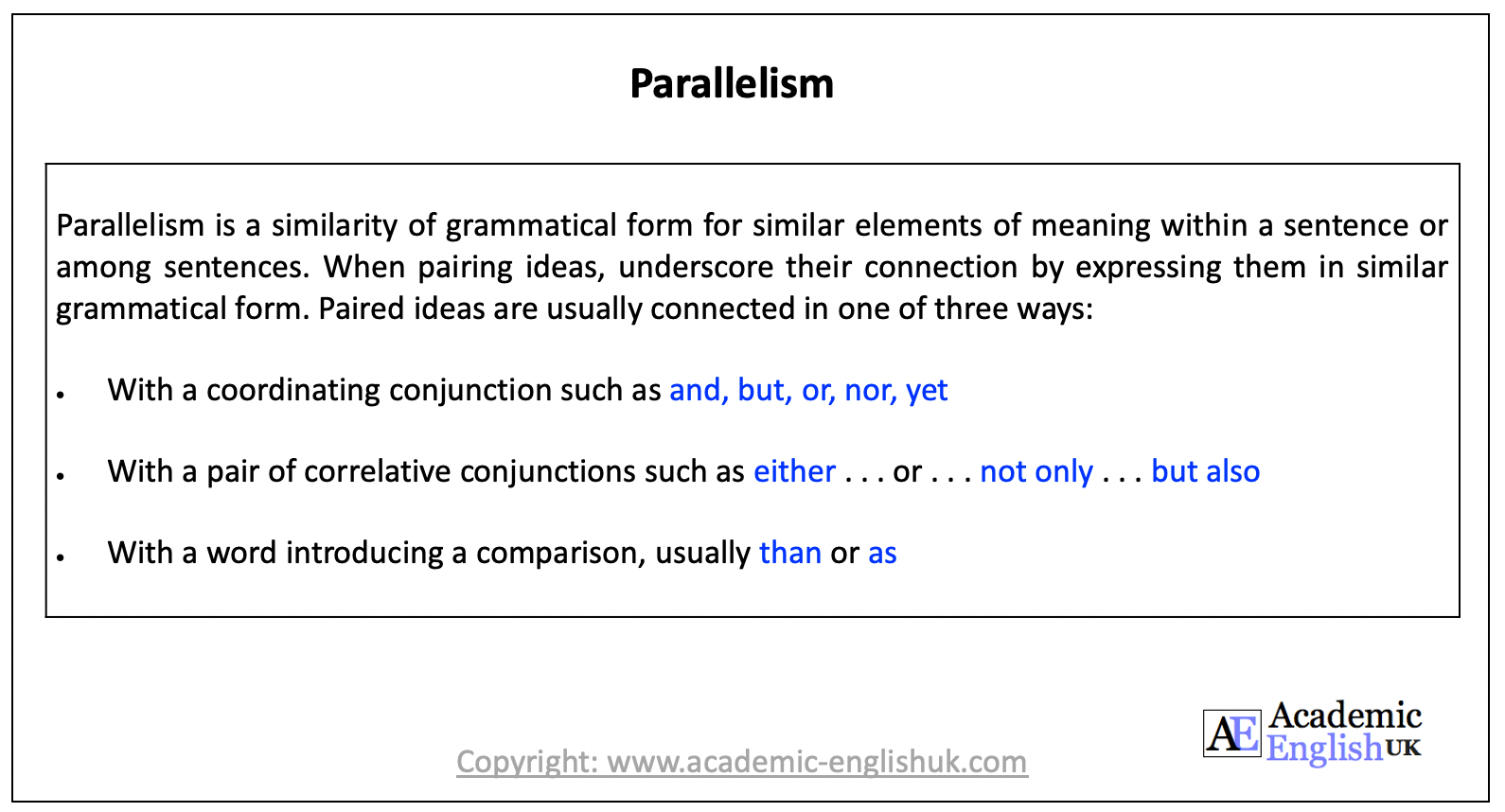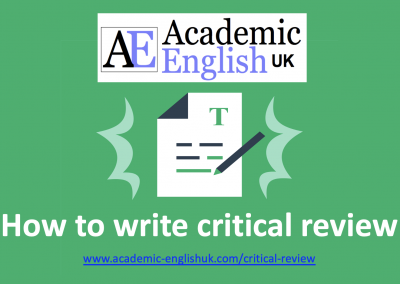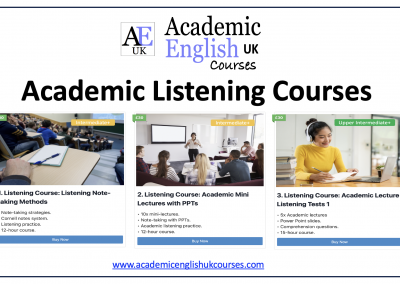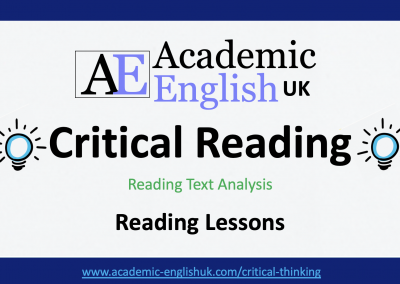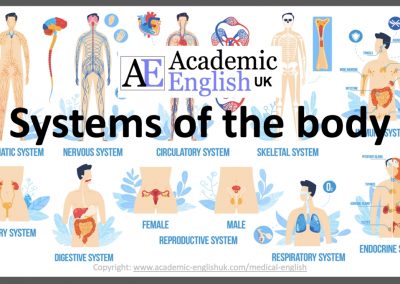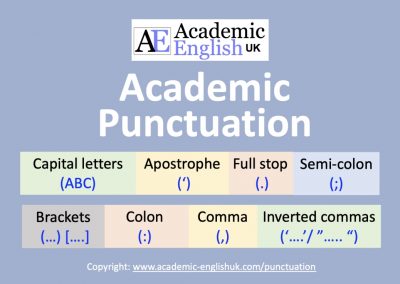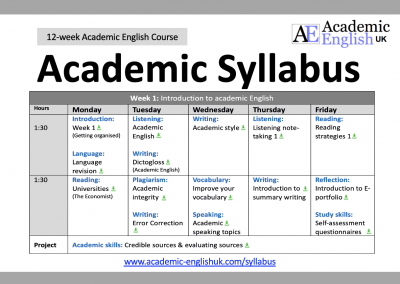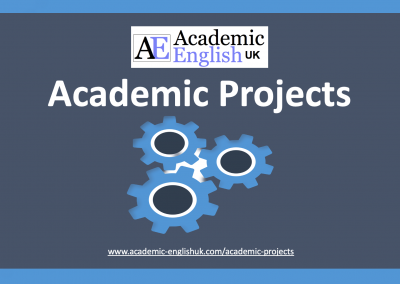Sentence Structure
What is sentence structure?
Sentence structure is the way a sentence is constructed, grammatically. There are two types of clauses that create a sentence: independent and dependent. An independent (main) clause is a complete thought that can stand alone as a sentence. A dependent (subordinate) clause is an incomplete thought that cannot stand alone as a sentence.
There are generally four types of sentence structure; 1) Simple: sentence expresses a single thought and must contain a subject and a verb. 2) Compound: sentence consists of two simple sentences that are connected with a coordinating conjunction (for, and, nor, but, or, yet, so). 3) Complex: sentence is an independent clause connected to one or more dependent clauses using a subordinating conjunction (despite, although) or a relative pronoun (who, which). 4) Compound Complex: sentence has two independent clauses and one or more dependent clauses.
Common Sentence Errors
There are a number of common sentence structure errors. These are 1) Fragments: an incomplete sentence. 2) Run-on sentences: a sentence that runs into another with no punctuation. 3) Comma splice: a comma is incorrectly used to connect two sentences.
Sentence Structure Lesson 1
Aim: To support students in their understanding and practice of the four types of sentence structures: simple, compound, complex and complex-compound.
Time: 60 minutes & homework task
Sentence Structure 1: simple, compound, complex & complex compound [new 2020]
This lesson is to support students in their understanding and practice of the four types of sentence structures: simple, compound, complex and complex-compound. It includes noticing, guided and freer practice. (see worksheet example) Time: 60mins. Level ***** [B1/B2/C1]. / TEACHER MEMBERSHIP / INSTITUTIONAL MEMBERSHIP
Sentence Structure Lesson 2
Aim: To support students in their understanding and practice of fragment, run-on and comma splice sentence structure
Time: 60 minutes & homework task
Sentence Structure 2: fragment, run-on & comma splice sentences [new 2020]
This lesson helps improve students’ sentence structure through identifying and practising fragments, run-ons and comma splice sentences. It includes noticing, guided and freer practice. (see worksheet example) Time: 60mins. Level ***** [B1/B2/C1]./ TEACHER MEMBERSHIP / INSTITUTIONAL MEMBERSHIP
Sentence Structure Lesson 3
Aim: This lesson helps to improve students’ understanding and practice of complex sentence structure.
Time: 90 minutes & homework task.
Sentence Structure 3: Complex sentence structure (STEM) [new 2022]
This lesson is to support students in their understanding and practice of complex sentence structure. The worksheets focus on three structures: adverbial, adjective and noun clauses and contain key explanations and sentence and paragraph-level practice within a STEM context (see worksheet example) Time: 90mins. Level ***** [B1/B2/C1] TEACHER MEMBERSHIP / INSTITUTIONAL MEMBERSHIP
Relative clauses
Aim: To support students in their understanding and use of defining & non-defining relative clauses.
Time: 60 minutes plus homework task.
Relative clauses: defining & non-defining clauses [new 2020]
This lesson is to support students in their understanding and use of defining & non-defining relative clauses.The lesson includes four tasks of guided practice and two tasks of freer practice (see worksheet example) Time: 60mins. Level ***** [B1/B2/C1]. / TEACHER MEMBERSHIP / INSTITUTIONAL MEMBERSHIP
Cause & effect language
Aim: To support students in their understanding and use of cause & effect language.
Time: 60 minutes plus homework task.
Cause & effect language: causes, effects and related language [new 2020]
This lesson helps improve students’ awareness of cause and effect language. It includes a language review section, lots of guided practice and freer paragraph writing practice. (see worksheet example) Time: 60mins. Level ***** [B1/B2/C1] / TEACHER MEMBERSHIP / INSTITUTIONAL MEMBERSHIP
Compare & contrast
Aim: To support students in their understanding and use of compare & contrast language.
Time: 60 minutes plus homework task.
Compare & contrast: comparatives and superlatives [new 2020]
This lesson helps improve students’ awareness of compare and contrast language. It includes a language review section, lots of guided practice and freer paragraph writing practice. (see worksheet example) Time: 60mins. Level ***** [B1/B2/C1]. / TEACHER MEMBERSHIP / INSTITUTIONAL MEMBERSHIP
Modals
Aim: To support students in their understanding and use modal auxiliary verbs.
Time: 60 minutes plus homework task.
Modal Auxiliary Verbs [new 2021]
This lesson helps improve students’ awareness of modal verbs. It includes a language review section, lots of guided practice and freer paragraph writing practice. (see worksheet example) Time: 60mins. Level ***** [B1/B2/C1] TEACHER MEMBERSHIP / INSTITUTIONAL MEMBERSHIP
Conditionals / If clauses
Aim: To support students in their understanding and use conditionals.
Time: 60 minutes plus homework task.
Conditionals [new 2021]
This lesson helps improve students’ awareness of conditionals. It includes a language review section, lots of guided practice and freer paragraph writing practice. (see worksheet example) Time: 60mins. Level ***** [B1/B2/C1] TEACHER MEMBERSHIP / INSTITUTIONAL MEMBERSHIP
Uncountable & Countable Nouns
Aim: To support students in their understanding and use of accountable and uncountable nouns.
Time: 60 minutes plus homework task.
Countable and uncountable nouns [new 2021]
This lesson helps improve students’ awareness of countable & uncountable nouns. It includes a language review section, lots of guided practice and freer paragraph writing practice. (see worksheet example Time: 60mins. Level ***** [B1/B2/C1] TEACHER MEMBERSHIP / INSTITUTIONAL MEMBERSHIP
Verb Patterns (-ing forms & to-infinitives)
Aim: To support students in their understanding and use of verb patterns.
Time: 60 minutes plus homework task.
Verb Patterns [new 2021]
This lesson helps improve students’ awareness of verb patterns (verb + infinitive, verb + to infinitive, verb + gerund, verb + that clause, verb + wh-clause) . It includes a language review section, lots of guided practice and freer paragraph writing practice. see worksheet example Time: 60mins. Level ***** [B1/B2/C1] TEACHER MEMBERSHIP / INSTITUTIONAL MEMBERSHIP
Academic Hedging Lesson
Aim: To support students in their understanding and use of hedging (cautious/tentative) language.
Time: 60 minutes plus homework task.
Hedging: Cautious / tentative language [new 2020]
This lesson supports students in their understanding & use of cautious / tentative language.The lesson includes six tasks of guided practice & two tasks of freer practice (see worksheet example) Time: 60mins & homework. Level ***** [B1/B2/C1]. / TEACHER MEMBERSHIP
Cohesion
Aim: To support students in their understanding and use of cohesive devices in a text
Time: 60 minutes
 Cohesion & Coherence Worksheet – AEUK
Cohesion & Coherence Worksheet – AEUK
This worksheet helps to consolidate what ‘cohesion’ is with a focus on pronouns, word forms and summary nouns. It also includes a coherence sheet on key connections and two practice activities. Example Level: ***** [B2/C1] / TEACHER MEMBERSHIP / INSTITUTIONAL MEMBERSHIP
Parallelism
Aim: To support students in their understanding and use of parallelism in writing.
Time: 30 minutes
 Parallelism Worksheet: 8 exercises
Parallelism Worksheet: 8 exercises
This worksheet provides an explanation of the key concepts of ‘parallelism’ and provides an error correction exercise to practise the key concepts. An awareness of this writing element really helps establish unity and readability in sentence structure. See Example worksheet. Level: ***** [B1/B2/C1] TEACHER MEMBERSHIP / INSTITUTIONAL MEMBERSHIP
X


